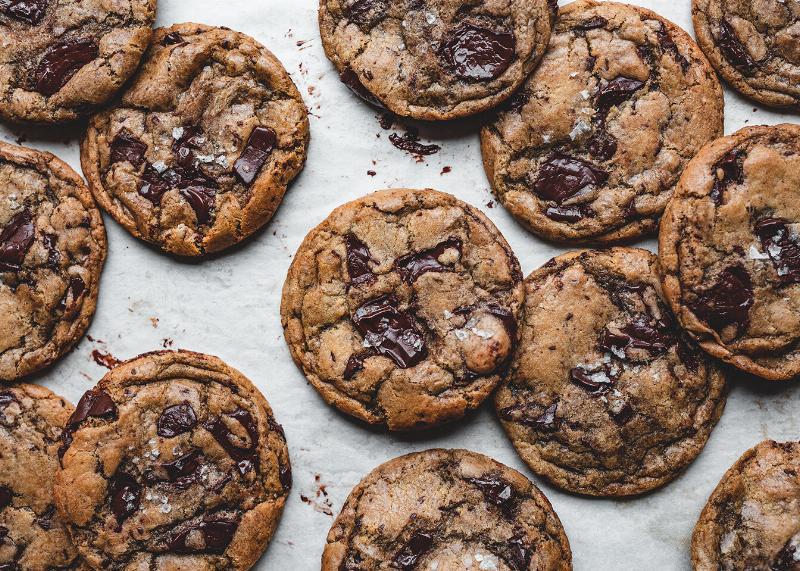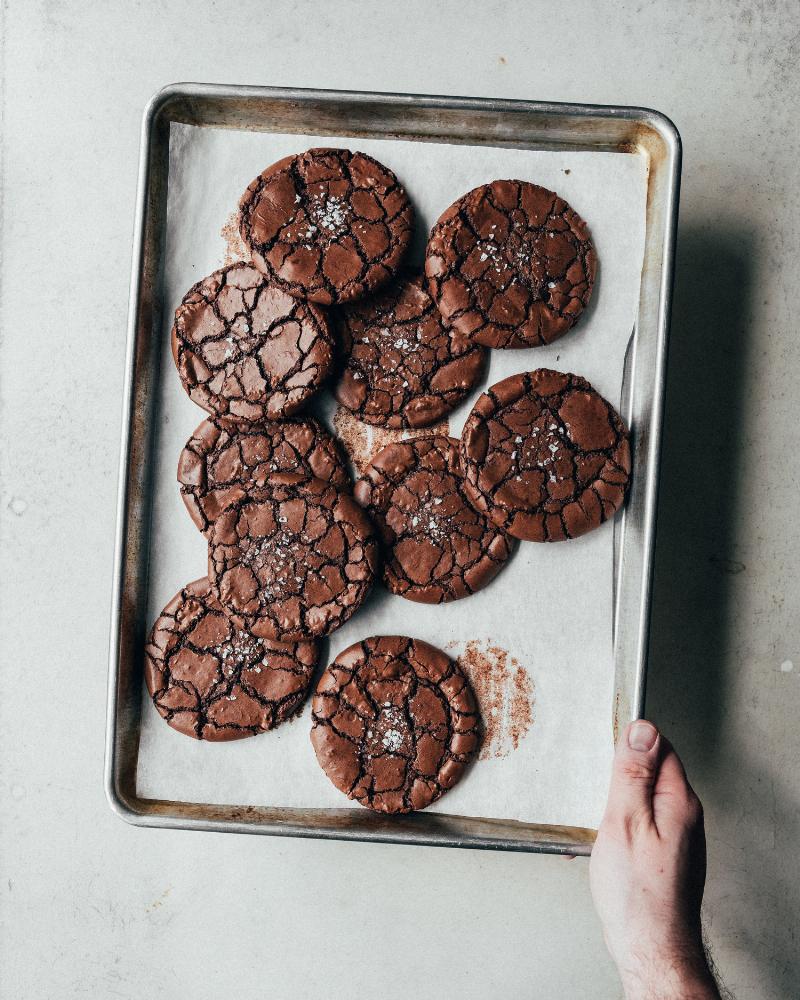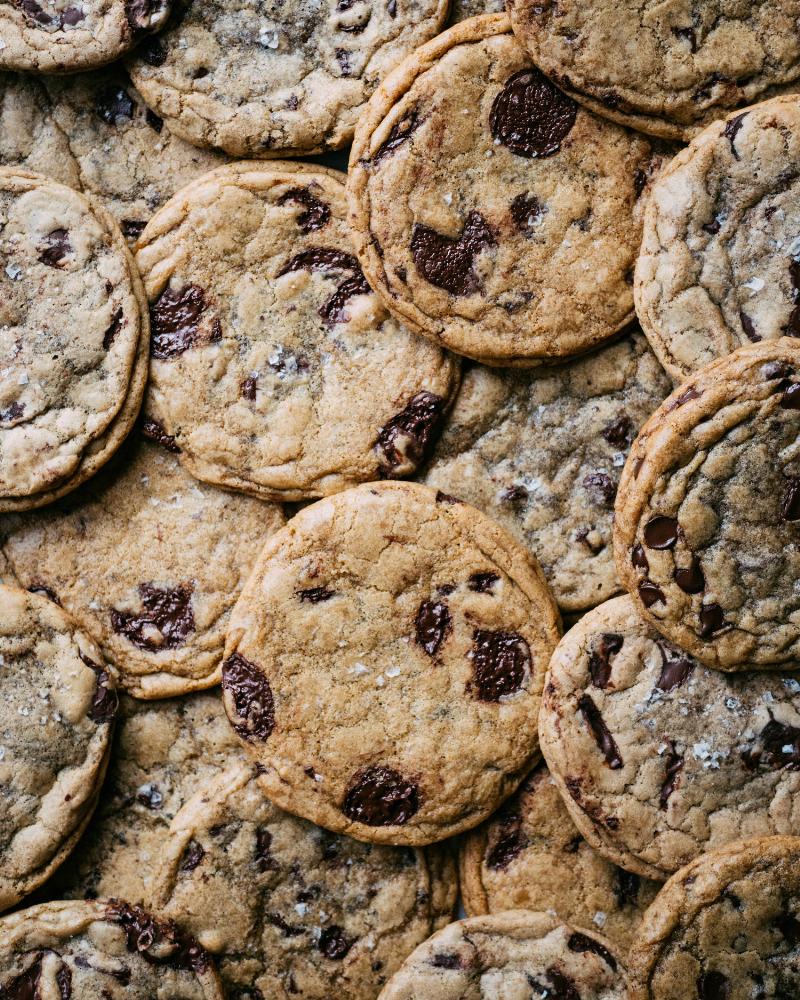Perfectly round, thick, and chewy – that’s the cookie dream, isn’t it? But sometimes, our cookie ambitions are thwarted by the dreaded cookie spread. You carefully place those perfectly shaped dough balls onto the baking sheet, only to pull them out of the oven looking more like sad, flat pancakes. Don’t worry, you’re not alone! This guide will dive deep into the science and art of How To Bake Cookies Without Spreading, ensuring your next batch emerges from the oven looking bakery-worthy.
Table Of Contents
One of the most frustrating experiences in baking is watching your carefully crafted cookie dough spread into thin, crispy wafers instead of the plump, chewy delights you envisioned. So, what causes this cookie catastrophe? The culprit is often an imbalance of ingredients, incorrect oven temperature, or even the type of baking sheet you use. Mastering how to bake cookies without spreading involves understanding these factors and implementing a few key techniques. Let’s unlock the secrets to perfect cookies!
Understanding the Science of Cookie Spread
Before we get into the how-to’s, let’s briefly explore the why. Cookie spread is primarily influenced by the ratio of fat, flour, and sugar in your recipe. Too much butter or sugar, and your cookies will melt quickly in the oven, spreading before they have a chance to set. Too little flour, and there isn’t enough structure to hold the cookies together. Understanding this delicate balance is the first step to achieving perfectly shaped cookies.
Essential Tips for Preventing Cookie Spread
Here are some foolproof tips that will help you conquer cookie spread and achieve cookie perfection:
- Chill Your Dough: This is perhaps the most crucial step. Chilling firms up the butter in the dough, slowing down its melting rate in the oven. I recommend chilling for at least 30 minutes, but for some recipes, an hour or even overnight chilling can be beneficial.
- Use the Right Flour: Different types of flour absorb liquid differently. All-purpose flour works well for most cookies, but using bread flour, which has a higher protein content, can add more structure and prevent excessive spreading.
- Measure Accurately: Baking is a science, and precise measurements are key. Use a kitchen scale for the most accurate results, especially when measuring flour. Scooping flour directly from the bag can lead to too much flour being packed in, resulting in dry, crumbly cookies.
- Proper Oven Temperature: Ensure your oven is preheated to the correct temperature. A too-hot oven will cause the cookies to spread rapidly before the edges set. Use an oven thermometer to ensure accuracy, as oven temperatures can sometimes fluctuate.
- Choose the Right Baking Sheet: Dark, non-stick baking sheets absorb more heat, leading to faster spreading. Opt for light-colored, aluminum baking sheets for more even baking. If you only have dark baking sheets, reduce the oven temperature by 25°F to prevent over-browning and spreading.
 Chilled cookie dough balls on a light-colored baking sheet ready for baking.
Chilled cookie dough balls on a light-colored baking sheet ready for baking.
Ingredient Adjustments for Thicker Cookies
Sometimes, even with perfect technique, a recipe might inherently lend itself to spreading. Here’s how you can tweak your ingredients for thicker cookies:
- Reduce Sugar: Sugar contributes to spreading, so slightly reducing the amount can help.
- Increase Flour: Adding a tablespoon or two of extra flour can provide more structure.
- Use Eggs Strategically: Egg yolks add richness and help bind the dough, while egg whites promote spreading. If your recipe allows, consider using an extra yolk instead of a whole egg.
- Consider Binding Agents: Adding a small amount of cornstarch or egg whites (contrary to the point above, a small amount can actually help bind) can help create a thicker cookie. You can find more information on adjusting dough in our guide on How to make cookie dough without eggs.
Baking Sheet Strategies to Prevent Spreading
The type of baking sheet you use can significantly impact cookie spread. Here are some considerations:
- Parchment Paper vs. Silicone Mats: Both prevent sticking, but silicone mats insulate the bottom of the cookies, potentially leading to more spread. Parchment paper is generally a safer bet for preventing spread. For thinner cookies, you may enjoy the results you get by utilizing the techniques in How to roll cookies thin.
- Cooling the Baking Sheet: Cooling your baking sheet between batches can help prevent the dough from melting too quickly upon contact.
 Perfectly shaped cookies baking on a baking sheet lined with parchment paper.
Perfectly shaped cookies baking on a baking sheet lined with parchment paper.
Troubleshooting Common Cookie Spreading Issues
“My cookies are still spreading, even after chilling the dough!” I hear this often. Here are some possible reasons and solutions:
- Oven Calibration: Invest in an oven thermometer to ensure your oven is at the correct temperature.
- Butter Temperature: Make sure your butter is softened but not melted. Melted butter will lead to increased spreading. You might find our guide on Cookie recipe with fruit helpful as it utilizes chilled butter for some recipes.
- Recipe Modifications: If you’ve made any substitutions to the recipe, they could be affecting the balance of ingredients and causing spreading. Experimenting with different recipes like how to make cookies with cake mix or how to make brownie cookies can give you a better understanding of ingredient ratios.
 Perfectly baked, thick cookies cooling on a wire rack.
Perfectly baked, thick cookies cooling on a wire rack.
Conclusion
Mastering how to bake cookies without spreading is a journey of understanding ingredients, techniques, and a little bit of oven magic. By following these tips and paying attention to the details, you’ll be well on your way to baking batches of perfectly shaped, delicious cookies that will impress everyone. So, grab your ingredients, preheat your oven, and get ready to bake some truly exceptional cookies!

Pingback: How to Bake Cookies with Brown Sugar - Bestbaking Recipes
Pingback: How to Bake Cookies with Crisp Edges - Bestbaking Recipes